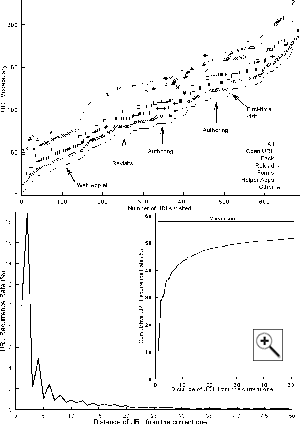How People Use the Web
an empirical study
We captured usage data of 23 people using the Web for 6 weeks. From the numbers and follow-up interviews, we were able to detect patterns on how people visit and revisit Web pages. From these, we generated guidelines on the design of history systems for WWW browsers.
The first graph shows the number pages (URLs) a person has visited on the x-axis, and how many of those pages are new (y-axis). The 'All' line shows how people visit new pages and revisit old ones. The other curves are shifted above the 'All' line by a constant amount, and show how the most common navigation actions were invoked. Specific episodes can now be identified from particular patterns, such as authoring (flat areas with many reloads), first-time visits to pages, and so on. The second graph plots 'Distance', which is the number of pages between the current page being visited from its last appearance. For example, a distance of 1 occurs when the user reloads the current page, a distance of two occurs when the current page is a revisit to the one seen two pages ago. The inset plots distance as a running sum. Through graphs such as these, we can predict how effective history mechanisms (such as the 'Back' and 'History Menu' option) are in current Web browsers.
Primary Investigators
Linda Tauscher (as part of her MSc Thesis)
Saul Greenberg (Supervisor)
Milestones
- MSc Thesis produced and successfully defended.
- Papers describing the study and its implications published.
Current Status
- Completed


 ucalgary.ca
ucalgary.ca
